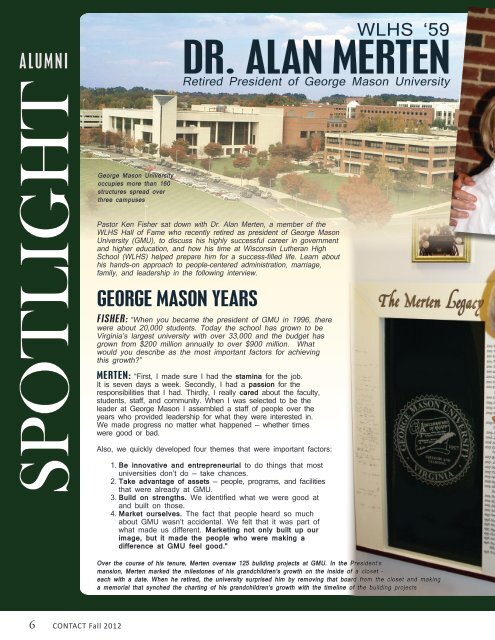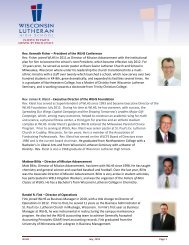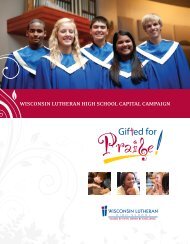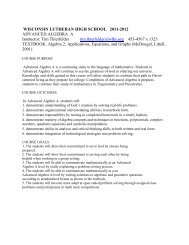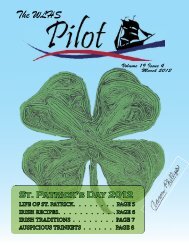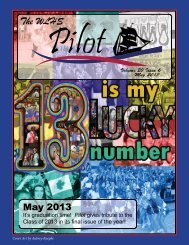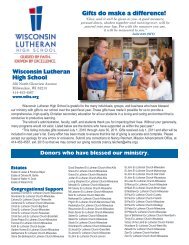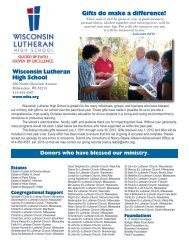Proud Past Christ-Centered Mission Strategic Future - Wisconsin ...
Proud Past Christ-Centered Mission Strategic Future - Wisconsin ...
Proud Past Christ-Centered Mission Strategic Future - Wisconsin ...
You also want an ePaper? Increase the reach of your titles
YUMPU automatically turns print PDFs into web optimized ePapers that Google loves.
ALUMNI<br />
WLHS ‘59<br />
DR. ALAN MERTEN<br />
Retired President of George Mason University<br />
SPOTLIGHT<br />
George Mason University<br />
occupies more than 160<br />
structures spread over<br />
three campuses<br />
<strong>Past</strong>or Ken Fisher sat down with Dr. Alan Merten, a member of the<br />
WLHS Hall of Fame who recently retired as president of George Mason<br />
University (GMU), to discuss his highly successful career in government<br />
and higher education, and how his time at <strong>Wisconsin</strong> Lutheran High<br />
School (WLHS) helped prepare him for a success-filled life. Learn about<br />
his hands-on approach to people-centered administration, marriage,<br />
family, and leadership in the following interview.<br />
GEORGE MASON YEARS<br />
FISHER: “When you became the president of GMU in 1996, there<br />
were about 20,000 students. Today the school has grown to be<br />
Virginia’s largest university with over 33,000 and the budget has<br />
grown from $200 million annually to over $900 million. What<br />
would you describe as the most important factors for achieving<br />
this growth”<br />
MERTEN: “First, I made sure I had the stamina for the job.<br />
It is seven days a week. Secondly, I had a passion for the<br />
responsibilities that I had. Thirdly, I really cared about the faculty,<br />
students, staff, and community. When I was selected to be the<br />
leader at George Mason I assembled a staff of people over the<br />
years who provided leadership for what they were interested in.<br />
We made progress no matter what happened — whether times<br />
were good or bad.<br />
Also, we quickly developed four themes that were important factors:<br />
1. Be innovative and entrepreneurial to do things that most<br />
universities don’t do — take chances.<br />
2. Take advantage of assets — people, programs, and facilities<br />
that were already at GMU.<br />
3. Build on strengths. We identified what we were good at<br />
and built on those.<br />
4. Market ourselves. The fact that people heard so much<br />
about GMU wasn’t accidental. We felt that it was part of<br />
what made us different. Marketing not only built up our<br />
image, but it made the people who were making a<br />
difference at GMU feel good.”<br />
Over the course of his tenure, Merten oversaw 125 building projects at GMU. In the President’s<br />
mansion, Merten marked the milestones of his grandchildren’s growth on the inside of a closet –<br />
each with a date. When he retired, the university surprised him by removing that board from the closet and making<br />
a memorial that synched the charting of his grandchildren’s growth with the timeline of the building projects<br />
6 CONTACT Fall 2012


